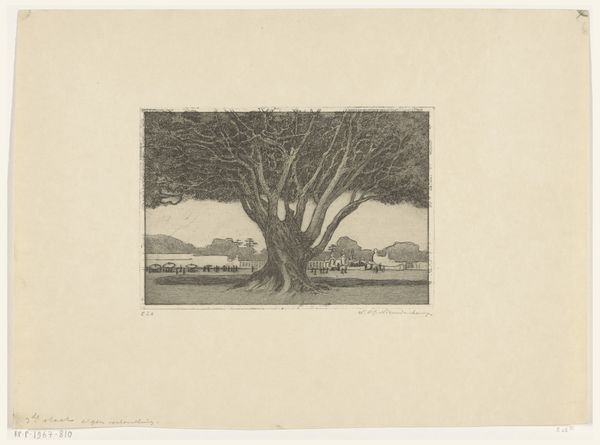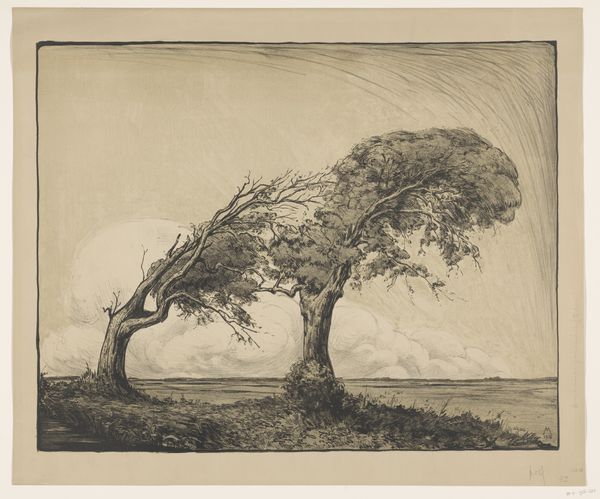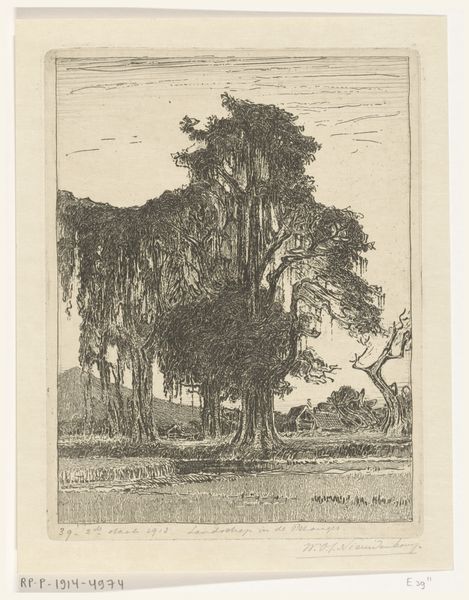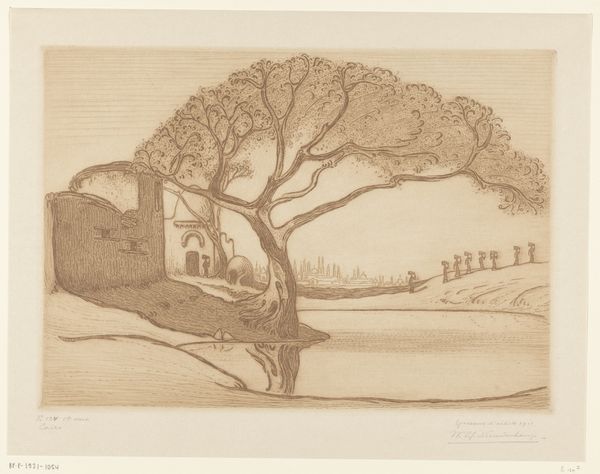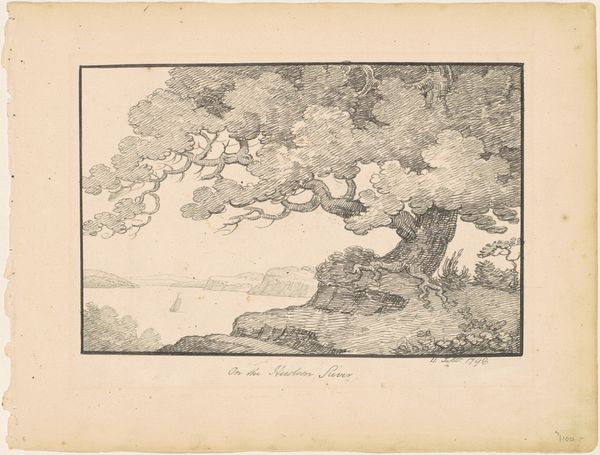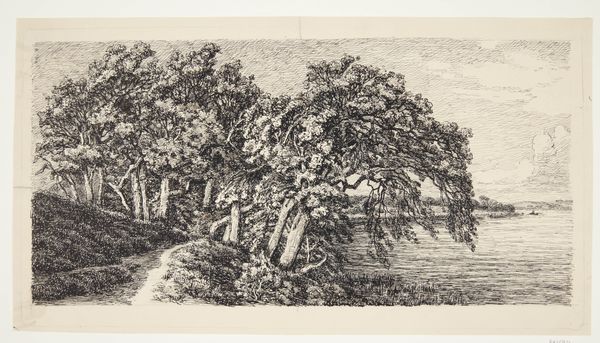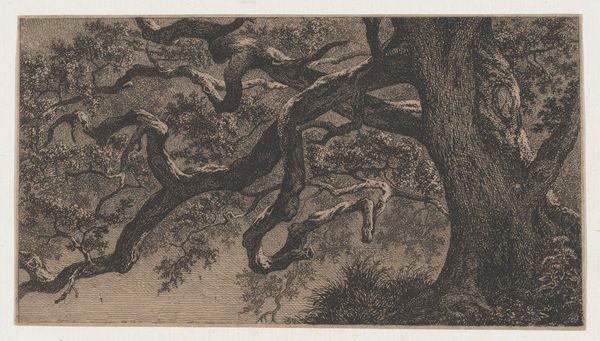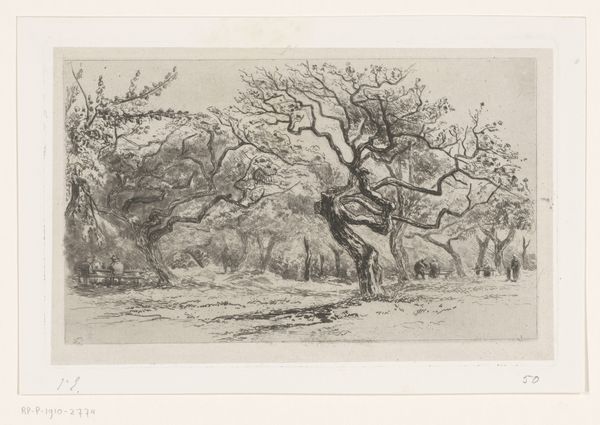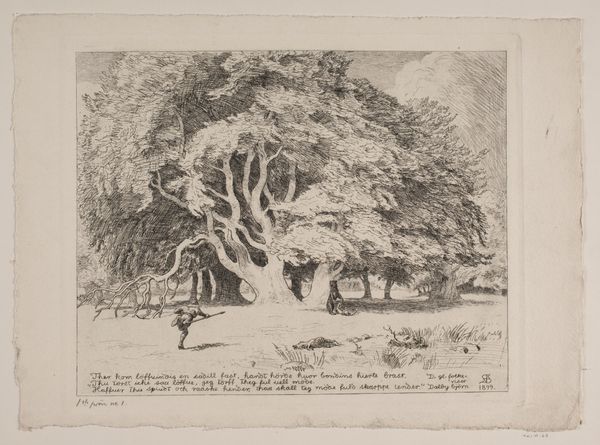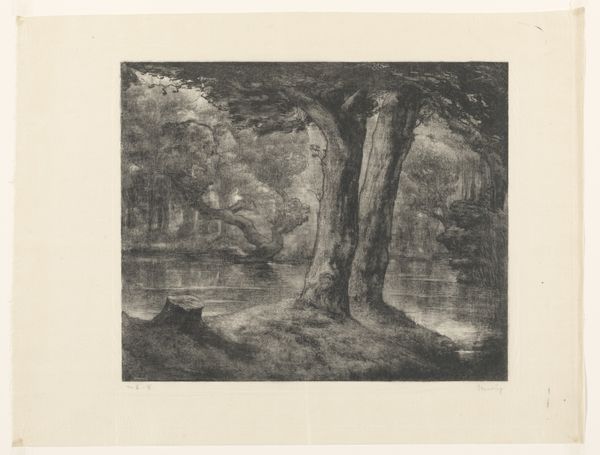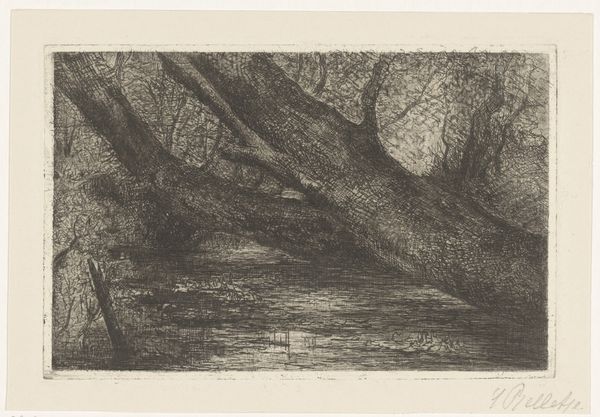
Waringinbomen in de tuin van het paleis van de sultan in Jogyakarta Possibly 1902 - 1910
0:00
0:00
print, etching
#
tree
#
dutch-golden-age
# print
#
etching
#
landscape
#
etching
#
figuration
#
line
#
symbolism
Dimensions: height 270 mm, width 395 mm
Copyright: Rijks Museum: Open Domain
Editor: So, this etching is by Wijnand Otto Jan Nieuwenkamp, possibly created between 1902 and 1910. It’s titled "Waringinbomen in de tuin van het paleis van de sultan in Jogyakarta." The overwhelming tree, almost like an arch, gives the piece a sort of grand, solemn air, wouldn't you agree? What aspects of this work strike you the most? Curator: What immediately captures my attention is the subject itself: the Waringin tree, or banyan, and its location within the Sultan’s palace gardens. Waringin trees hold deep symbolic value in Javanese culture, representing protection, wisdom, and the connection between the earthly and spiritual realms. Think about the socio-political implications: Nieuwenkamp, a Dutchman, depicts a deeply Javanese symbol situated within the seat of Javanese power. Do you consider this a respectful observation or a representation laden with colonial overtones? Editor: That’s a complex question! The technique, this very detailed etching, seems to treat the subject with reverence. The scale emphasizes the grandeur... but you are right, a European artist choosing to represent a local symbol raises many issues about cultural ownership and representation. Curator: Exactly. The piece operates on several layers. The very act of depicting the tree as a central, almost monolithic figure elevates it but also possibly exoticizes it for a Western audience. The meticulous detail in the etching speaks to the influence of Dutch Golden Age landscape traditions. Are we looking at a genuine interest in Javanese culture, or is it filtered through a colonial lens? Editor: I suppose it could be both. I never would have thought of the banyan tree as symbolic without you explaining the socio-political context. Curator: It illustrates how art is inseparable from its historical and cultural moment. By understanding the context, the artwork reveals not just what is depicted, but who is depicting it and why. Editor: This perspective really opens my eyes. I now see how crucial it is to look beyond the aesthetics and consider the power dynamics at play.
Comments
No comments
Be the first to comment and join the conversation on the ultimate creative platform.
